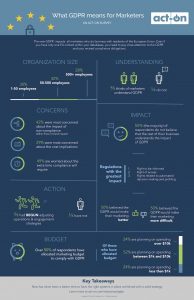Employment benefits, from insurance to retirement vehicles, are an important part of most compensation packages, above and beyond a paycheck. In fact, 54.3% of Americans receive health insurance through an employer, and 73% of workers have access to retirement benefits at work.
But employers make regular changes to their insurance and retirement offerings, in addition to any legal changes, that might affect benefits. This is why all employers who offer these kinds of benefits provide an open enrollment period each year. Generally, employer open enrollment periods coincide with the ACA marketplace open enrollment, meaning November is usually the month to make decisions for next year’s benefits.
If you’re feeling overwhelmed by your open enrollment options, here are the five most important tasks for you to complete during the 2024 open enrollment period.
1. Compare Medical Plans
Many employer-sponsored healthcare plans can change from one year to the next, so don’t assume you can just leave everything the same from last year. Some of the specific changes you may need to look out for include:
Generally, employer-sponsored medical plans will offer two tiers of coverage: one with higher premiums and lower deductibles, and one with lower premiums and higher deductibles.
To determine which plan will work best for you, it’s helpful to look over your medical costs from the past year or two. Did you shoot past your out-of-pocket maximum halfway through the year or did you barely need to see the doctor? Though your health can change from one year to the next, looking at your healthcare usage from the past few years can help you get a better sense of whether lower premiums or lower deductibles will save you money.
2. Decide How Much to Fund Your Spending Accounts
Many employees have an opportunity to set pre-tax dollars aside in various spending accounts. These accounts can help you both pay for upcoming expenses with tax-free money and lower your annual tax burden. Here are the most common spending accounts available to employees:
3. Check Your Disability and Life Insurance Levels
Open enrollment is also when most employers offer disability insurance and life insurance options to employees. Figuring out which of these you might need can be confusing.
To start, it’s a no-brainer to accept any free disability or life insurance that is offered by your workplace. This will cost you nothing and provide you with a small measure of protection should something happen to you.
But it’s a mistake to assume that the minimal coverage offered by a free policy is enough to take care of your disability and life insurance needs—but that doesn’t necessarily mean buying extra coverage through work is the best option.
If you enjoy good health, you will likely find cheaper term life insurance on the open market compared to the additional coverage offered through your employer. But if you have any kind of severe or chronic health problems, you may not qualify for health insurance through the marketplace and your employer-sponsored life insurance may be your best bet.
The amount of disability coverage you receive for free through work probably won’t cover your needs if you become disabled and are unable to work. If you have the opportunity to purchase extra disability coverage through your employer-sponsored insurance, it’s smart to compare the cost of that coverage with the cost of an individual policy.
4. Consider Increasing Your Retirement Contributions
Although you can change your 401(k) contributions at any time, open enrollment is a good time to think about how much you are setting aside for retirement.
Start by making sure that you are at least contributing enough to receive any company matching contributions. Putting aside any less than the company matching amount means you are leaving free money on the table.
The maximum annual contribution also tends to increase every year to account for inflation. In 2024, workers can contribute up to $23,000 in their 401(k) or other tax-deferred workplace retirement account, which is up from the 2023 maximum of $22,500.
While few workers can afford to set aside $884 every other week (to reach the maximum contribution for 2024), increasing your contribution during open enrollment can help you build your nest egg and reduce your current tax burden.
5. Check Your Beneficiaries
Before you shut down the HR portal for open enrollment, make sure that you have beneficiaries listed on your life insurance and retirement accounts, and that those beneficiaries are up to date. Marriage, divorce, children, and other life events can affect who you elect as your beneficiary, and the courts have made it clear that the designation of beneficiaries on life insurance and retirement account paperwork is the last word.
As with your retirement contributions, you can change your beneficiaries at any time during the year, but open enrollment is an excellent annual reminder to check on this important financial task.
Getting Ready for 2024
Though it still may seem far away, the new year is just around the corner. Taking a little time to figure out your benefits during open enrollment will set you up for a healthy and secure 2024.
(11)
Report Post








